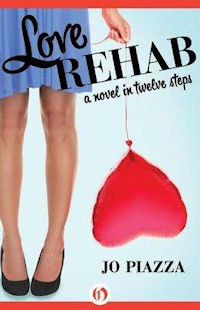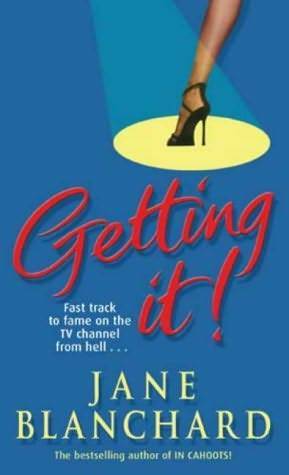date newest »
newest »
 newest »
newest »
message 1:
by
Susan
(new)
Jul 23, 2013 02:36PM
 thanks Maria for including me as part of your post. I confess to not having read the first part, but having read this post, I will definitely be reading it now. Lots of info there I knew, but so much that I didn't. I once heard one of the big supermarkets will only take books which have blue covers! I very much believe in brand presence, and as you may recall, I re-did my cover for Sign of the Times, courtesy of my fab designer, Brad Covey, late last year. On another note, I didn't know that about the fonts and indeed, haven't even heard of some of them! Flickr/creativecommons will be useful too. Great post! Sooz
thanks Maria for including me as part of your post. I confess to not having read the first part, but having read this post, I will definitely be reading it now. Lots of info there I knew, but so much that I didn't. I once heard one of the big supermarkets will only take books which have blue covers! I very much believe in brand presence, and as you may recall, I re-did my cover for Sign of the Times, courtesy of my fab designer, Brad Covey, late last year. On another note, I didn't know that about the fonts and indeed, haven't even heard of some of them! Flickr/creativecommons will be useful too. Great post! Sooz
reply
|
flag
 Thanks, Sooz! It was a very informative and interesting conference. I didn't know that about the fonts either!!
Thanks, Sooz! It was a very informative and interesting conference. I didn't know that about the fonts either!!Yeah, I'll probably be making use of that creative commons page on Flickr!
Can't believe the supermarket would only take books with blue covers!! Makes you wonder what type of shoppers they have there LOL
 Thanks for sharing, Maria. *waves* How are you? Busy, right? Everybody's crazy busy these days. :) I'm glad to see that much of what you shared are things that I already knew. That means I'm not behind on the curve of this stuff. *laughs* There's so much to think about in this business, isn't there?
Thanks for sharing, Maria. *waves* How are you? Busy, right? Everybody's crazy busy these days. :) I'm glad to see that much of what you shared are things that I already knew. That means I'm not behind on the curve of this stuff. *laughs* There's so much to think about in this business, isn't there?Take care of yourself, my friend.
-Jimmy
 Hi Jimmy! Thanks for reading! You are ahead of me in this marketing game if you already knew these things... much of it came as news to me LOL I've never been very good at marketing. It was good to get some tips from this conference (I need them!).
Hi Jimmy! Thanks for reading! You are ahead of me in this marketing game if you already knew these things... much of it came as news to me LOL I've never been very good at marketing. It was good to get some tips from this conference (I need them!).Yes, I am very busy, editing 2 books, writing another, running 2 blogs and a forum, as well as reading and reviewing and trying to keep up with the networking sites, and my overly full e-mail inbox... Oh... and that little thing of working full time and "real life". It's a wonder us independent authors manage to ever get any books published, isn't it?
I hope your writing is going well, Jimmy! x
 Very interesting. When I designed the cover for Misadventures Of Fatwoman, the real focus was on the scales and the word 'help' - although there is pink and the font is light and fun. I'd not thought of the story as chick-lit, although it deals with women and how they feel about their bodies.
Very interesting. When I designed the cover for Misadventures Of Fatwoman, the real focus was on the scales and the word 'help' - although there is pink and the font is light and fun. I'd not thought of the story as chick-lit, although it deals with women and how they feel about their bodies. I think the cover highlights the humour but also demonstrates the weaknesses of the heart.
http://www.goodreads.com/book/show/12...
 Fascinating information, Maria. I fully admit to having no brand or coherent marketing strategy.
Fascinating information, Maria. I fully admit to having no brand or coherent marketing strategy. The book cover thing struck me after I published Killing Instinct. Being the third book in the series, I was trying to market them all together and I realized the covers have absolutely nothing in common. Perhaps this is my brand? Absolute incoherence. (Like my personality!) :)
 Darcia wrote: "Fascinating information, Maria. I fully admit to having no brand or coherent marketing strategy.
Darcia wrote: "Fascinating information, Maria. I fully admit to having no brand or coherent marketing strategy. The book cover thing struck me after I published Killing Instinct. Being the third book in the ser..."
LOL, I think we share the 'absolute incoherence' problem. My covers are all completely different. This is proof I have no clue about marketing. I suppose it makes sense to have a brand identity.
 Julie wrote: "Very interesting. When I designed the cover for Misadventures Of Fatwoman, the real focus was on the scales and the word 'help' - although there is pink and the font is light and fun. I'd not tho..."
Julie wrote: "Very interesting. When I designed the cover for Misadventures Of Fatwoman, the real focus was on the scales and the word 'help' - although there is pink and the font is light and fun. I'd not tho..."Julie, that cover is great, and definitely fits in with the chick-lit market. I'm sure all women could find something to relate to in that book :)



















